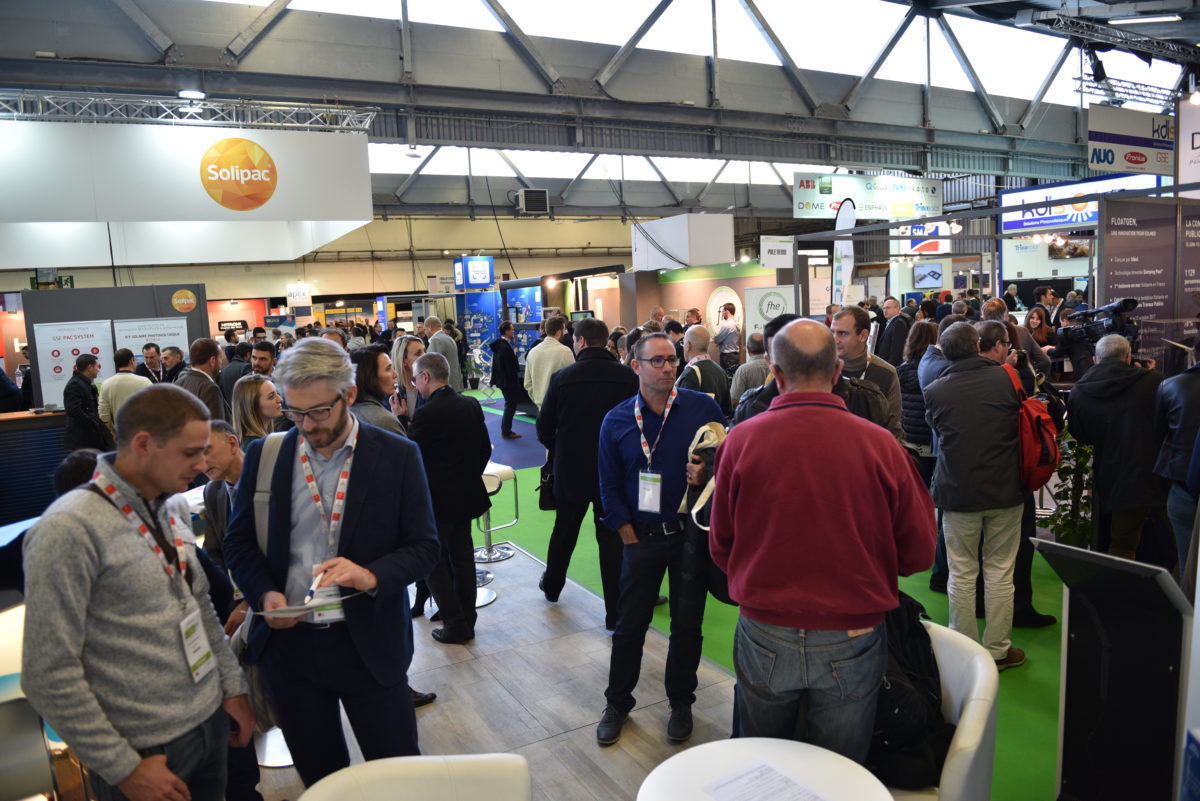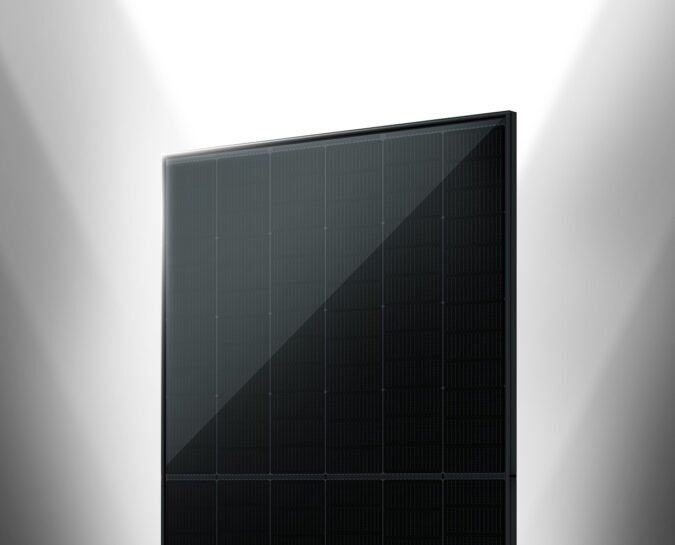A mixture of optimism and realism marked the event, which was held between December 13 and 14 in Montpellier in France’s southern region of Occitanie.
While the French government and energy giant, EDF have announced ramped up plans for solar in the years and decades to come, the country’s PV sector has shown regained confidence in the future of the technology, at home and abroad.
Although EnerGaïa is typically considered a regional renewable energy event, since it both receives the support of Occitanie, and a significant number of its exhibitors come from this very sunny region, this year an international dimension was very much apparent.
Almost all the key national solar and renewable energy players were there, including the country’s three major power utilities, EDF, Engie and Direct Energie, all of which are active in the solar sector.
Below are the four key takeaways from the event:
- EDF’s 30 GW solar plan – no turning back
The very ambitious, and unexpectedly big solar plans, announced by EDF at the beginning of this week were one of the main talking points at the fair.
The company announced it will deploy 30 GW of PV capacity in the 15-year period between 2020 and 2035, an amount of installed power which will very likely compensate the dismantling of a consistent portion of its huge nuclear power generation capacity.
EDF’s move means a real change in the French mentality towards renewables and energy in general, Xavier Daval, VP of French renewable energy association SER and CEO and President of KiloWattsol SAS, told pv magazine at the fair.
“We don’t have to use in this case the concept of energy transition, this is a real revolution,” Daval commented.
EDF was active in the solar sector in France through its units EDF Energies Renouvelables (large-scale solar) and EDF ENR (distributed generation) in France prior to this announcement, but it had never so overtly stated that PV could gain such importance.
The new plan has given everybody in the French solar sector the impression that there is no turning back.
- An additional GW per year from tenders
On Monday, France’s Minister Of Ecological and Solidary Transition (MTES), Nicolas Hulot announced the annual capacity to be allocated through the series of solar tenders launched by the French government in late 2016 will increase from 1.45 to 2.45 GW.
Naturally, this announcement was welcomed by all the event’s exhibitors, as most of their business runs through this system of multi-year tenders, which are open to all kinds of solar power projects, from self-consumption to large-scale PV projects up to 17 MW.
The French solar sector, however, has experienced a lot of issues over the past decade, and is now mature enough to welcome such big announcements with a mixed feeling of enthusiasm and realism, as competition remains strong and several aspects of the regulatory framework leave room for improvement.
Another good signal for the PV sector, however, was the presence at the fair of local solar module makers, such as Systovi, Sillia (recently acquired by German manufacturer Recom) and Photowatt (a unit of EDF).
According to several distributors present at the fair, French residential and commercial customers still prefer European – especially German – module technologies.
This, however, is also determined by the minimum import prices set by the EU. It is not easy to say if this trend will continue after they are eliminated.
- Self-consumption and storage
What Energaïa has also shown is that tenders are not the only interesting option in France’s current solar energy landscape, with self-consumption outside of the scheme considered a viable option in all rooftop segments.
Many developers and PV product distributors have clearly said that pure self-consumption, even without net metering, can be very profitable for small- and middle-sized enterprises that want to considerably reduce their energy bills.
If tenders for self-consumption and net metering require the use of the grid and the payment of fees, projects for pure self-consumption may be very competitive, as owners do not have to pay these fees, and projects can be developed faster.
Storage has also made its appearance at the fair, although prices in France remain too high to garner too much optimism in the near future.
Current customers, as in the early stages of development in more mature markets, such as Germany and Itay, are early technology adopters that want to test solar-plus-storage solutions.
But as orders are received, and awareness grows among PV system owners, it is likely that we will soon see an increasing number of storage systems offered in France.
- A new beginning
The French PV industry has already regained momentum since 2016, after former Minister of Sustainable Development, Regolene Royal implemented a series of measures to revive the sector after Sarkozy’s government announced a moratorium in 2010 on all projects developed under the FIT scheme.
The new lease of life, which has been injected into the industry by the activism of French Energy Minister, Nicolas Hulot, and President Emmanuel Macron, has found at Energaïa an ecosystem of developers, installers and distributors that is ready to be tasked with the deployment of high volumes of PV.
Vincent Boulanger, an independent French journalist that follows the local renewable energy sector for more than a decade told pv magazine that Energaïa is now set to become the French energy transition’s fair.
“After the 2010 moratorium,” Boulanger said, “the number of exhibitors at EnerGaïa collapsed to such an extent that everyone thought this event was doomed.
“The reconfiguration of the event in 2014 to EnerGaia Forum, that is to say, in an event combining a real set of conferences, business meetings and an exhibition space, has attracted more companies and visitors.
“This was also due to a more favorable political context at the national level and a strong mobilization of the region Occitanie. The year 2017 proves that EnerGaïa is beginning to regain its size before 2010, with a major difference: it is now the energy transition fair, attracting other renewable sectors, even if the majority of exhibitors are still solar.”
Xavier Daval, VP of French renewable energy association SER and CEO and President of KiloWattsol SAS also stressed the new dimension acquired by the fair. “Energaia is always a special event and, thanks to its condensed format, it presents the opportunity to cross everybody.
“This year, the ambiance was very positive, boosted by both the JB Levy and Macron announcements for solar PV.
“Solar activity is booming in France and its is just starting. I am already looking forward to seeing Energaia 2018, as I am confident it will be significantly larger in size and number of attendees.”
This content is protected by copyright and may not be reused. If you want to cooperate with us and would like to reuse some of our content, please contact: editors@pv-magazine.com.




1 comment
By submitting this form you agree to pv magazine using your data for the purposes of publishing your comment.
Your personal data will only be disclosed or otherwise transmitted to third parties for the purposes of spam filtering or if this is necessary for technical maintenance of the website. Any other transfer to third parties will not take place unless this is justified on the basis of applicable data protection regulations or if pv magazine is legally obliged to do so.
You may revoke this consent at any time with effect for the future, in which case your personal data will be deleted immediately. Otherwise, your data will be deleted if pv magazine has processed your request or the purpose of data storage is fulfilled.
Further information on data privacy can be found in our Data Protection Policy.